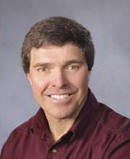 The traditional bodyweight exercises are knee-bends (squats), trunk curls, push-ups, bar-dips and chin-ups. Most of us have performed these exercises at some point during our lives, and many of us continue to include some of them in our overall conditioning program.
The traditional bodyweight exercises are knee-bends (squats), trunk curls, push-ups, bar-dips and chin-ups. Most of us have performed these exercises at some point during our lives, and many of us continue to include some of them in our overall conditioning program.
All five of the standard bodyweight exercises are effective for improving muscle strength and endurance, although not as productive as progressive resistance exercises performed with free-weights or weight-stack machines. The reason is that bodyweight exercises permit only one means of progression, namely, more repetitions using the same bodyweight resistance. On the other hand, weight-training exercises permit two means of progression. You first increase the number of repetitions, such as from 10 reps to 15 reps, then you increase the resistance, such as from 100 pounds to 105 pounds. Adding resistance makes the muscles adapt to a higher level of contraction tension, which greatly enhances strength development.
Nonetheless, bodyweight exercises have certain advantages from a practical perspective. For example, they can be done almost anytime and anywhere, especially squats, trunk curls and push-ups. They require no special equipment or facilities, which make them ideal for at-home training and at-hotel training. Unfortunately, a major problem with bodyweight exercises is redundancy. That is, doing seemingly endless repetitions of the same exercises in the same manner. Eventually, the muscles become so accustomed to your unchanging exercise regimen that they no longer respond to the training stimulus.
One means of addressing the problem of staleness is to change some aspect of the exercise program. Because the exercises are pre-determined and the number of repetitions performed is closely tied to your fitness level, I recommend making a change in your movement speed. You will find that doing each bodyweight exercise more slowly makes it much more challenging. Slower movement speeds reduce the role of momentum and force the muscles to work a lot harder.
Our research with strength training speed has demonstrated 50 percent better results with slow repetitions (14 seconds each) compared to standard speed repetitions (7 seconds each). With this in mind, I have designed a bodyweight exercise training program based on 15 second repetitions to maximize the strength-building benefits. Each repetition is performed in the following manner: take 10 full seconds for each upward movement, and five full seconds for each downward movement. Try your best to do the exercises according to the performance descriptions, and breathe continuously during every repetition.
Knee-Bends (Squats)
Begin standing with your feet about shoulder-width apart and pointing forward. Place your hands on your hips for balance. Slowly lower your hips downwards and backwards in five seconds, keeping your knees directly above your feet. Stop when your thighs are parallel to the floor, then slowly raise to the standing position taking 10 full seconds to do so. This exercise works almost all of the muscle groups of the legs, including the front thighs (quadriceps), rear thighs (hamstrings), and hips (glusteals). Try to do three knee-bends in 45 seconds, and progress gradually to six knee-bends in 90 seconds. You may be surprised at how much more difficult it is to perform slow-speed knee-bends.